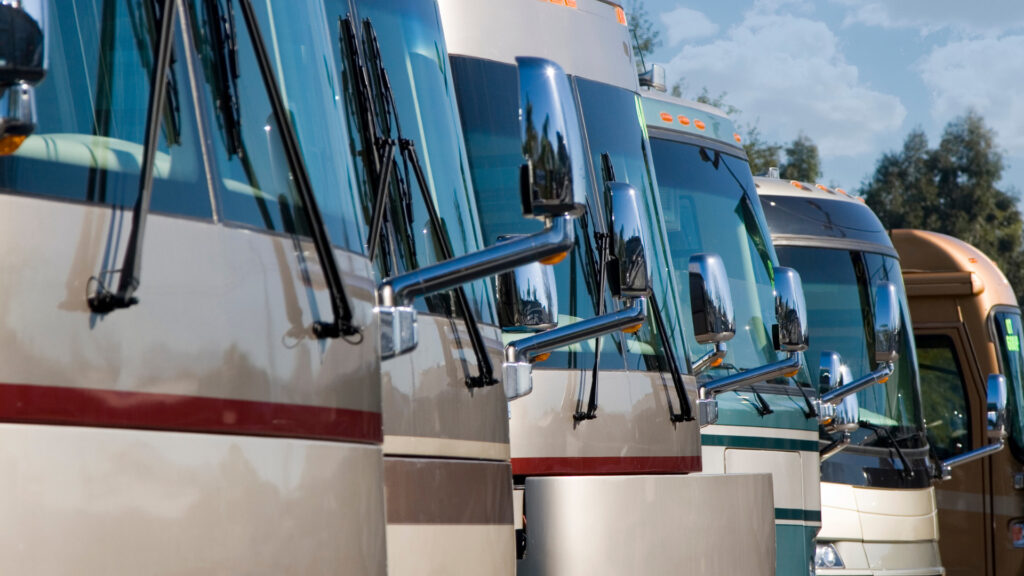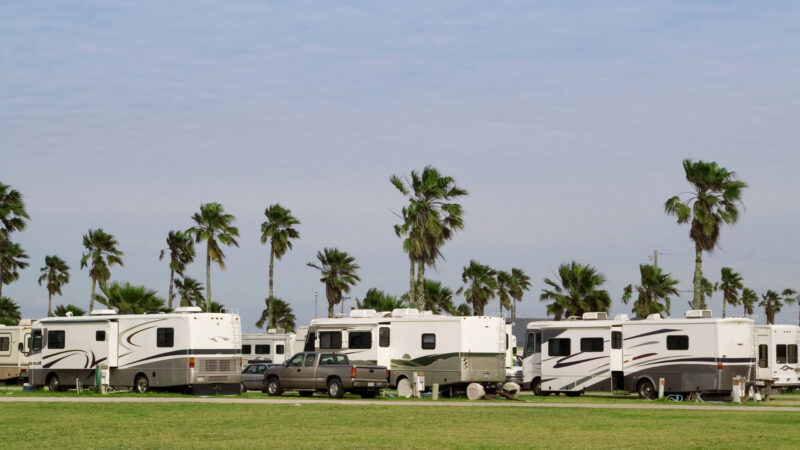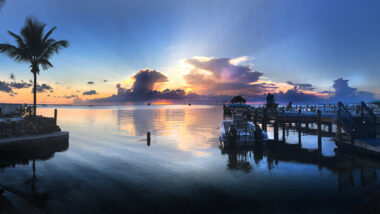Table of Contents Show
If you’ve been wondering when will the RV bubble burst, we’re here to announce that it officially has. While there may not have been a giant “popping” sound over Northern Indiana, the impacts are evident throughout the RV community.
We’re seeing some incredible changes in the market that will likely have massive and long-term impacts. So what caused the bubble, and why did it burst?
Today, we’re taking a closer look at RVing and what you can expect in the future. Buckle your seatbelt; it’s going to be a bumpy ride!
What Is the RV Bubble?
The RV bubble refers to the massive surge in demand for recreational vehicles over the last few years. With the increased difficulties traveling during the pandemic, many people turned to RVs to travel safely. This resulted in an unprecedented demand for campers of all shapes and sizes.
You don’t have to be an economist to understand supply and demand. The increase in RV sales and a shortage of inventory led to a massive price increase. Many consumers were paying large deposits on rigs that had yet to hit the assembly line.
RV manufacturers and suppliers spent a year or two struggling to keep up with the sudden influx of orders. However, many put the pedal to the metal, knowing that the bubble would burst and demand would return to normal levels eventually.

When Will the RV Bubble Burst?
It’s hard to pinpoint the exact moment or date when the bubble burst, but it’s obvious it has occurred. A recent RV Industry Association (RVIA) report indicates massive declines in wholesale RV shipments across all industry segments.
What does this mean? Dealers aren’t selling campers as fast as they were, and the demand has drastically cooled compared to the glory days for dealerships and manufacturers. While RVs were practically selling themselves for dealers, that’s no longer the case.
The RVIA’s research indicates a massive 63% decline in shipments of travel trailers and fifth wheels compared to last year. However, it wasn’t just the towable segment that took a hit. The entire motorhome segment saw a 13% decline, with Class A’s dropping 27% compared to last year.
Is the RV Bubble Bursting a Bad Thing?
The RV bubble bursting is good and bad news, depending on who you ask. For manufacturers and dealers, the RV bubble bursting is not ideal. Will they survive? Probably. However, many of these businesses will need to make some major adjustments.
Now that inventory levels have returned to pre-RV bubble levels, dealers will likely return to offering incentives to entice buyers.
Before the chaos, it wasn’t uncommon for consumers to get 20% to 30% off MSRP when purchasing a new rig. During the surge, we heard several buyers state they had no choice other than paying over MSRP.
RV dealers and manufacturers aren’t the only ones drastically impacted by the bubble bursting. If you or someone you know purchased an RV in the last year or so, it could impact you.
Many shoppers paid premium prices during these times, but a cooling demand and healthy supply resulted in price drops. Your new rig is now worth less, which could mean you’re underwater unless you had a large down payment.
Those who will benefit from the RV bubble bursting are those who waited patiently and didn’t purchase during the height of the market.
They can take advantage of incentives from dealers and practically have their pick of the litter when they step onto a dealership lot that previously sat empty.
What Caused the RV Bubble?
A perfect storm of circumstances created the RV bubble. A few different things went wrong all at the same time.
It exposed weaknesses for manufacturers who quickly scrambled to maintain the status quo. Let’s look at a few of the causes of the RV bubble.
2020
We all know that the chaotic events of 2020 were anything but predictable or expected.
As a result of travel restrictions and constantly changing requirements, many chose to purchase campers instead of going on far-away vacations. For many, campers were the only way for them to continue to travel safely.
However, the RV bubble started trending a couple of years before 2020. It began gaining momentum on social media platforms like YouTube, Instagram, and Facebook. Those looking to continue to travel were happily welcomed into the RV community.

Supply Shortages
Factories and shipping departments worldwide faced constant challenges for the past few years.
As a result, manufacturers discovered the fragility of the supply chain they significantly depend on. RV manufacturers had massive storage lots of partially completed campers needing out-of-stock parts to complete them.
The supply shortages for manufacturers made it impossible for them to keep up with the demand from dealerships and consumers. Many shoppers found themselves with limited options, and the prices for available campers were getting increasingly more expensive by the day.
Keep in Mind: Are you looking for ways to make quick cash on the road? Then take a look at how this YouTuber makes money to travel!
Lack of Workers
Another cause of the RV bubble was the massive worker shortages that affected many industries. Many employees quit due to health precautions, and many others were laid-off.
Additionally, with Americans receiving thousands of dollars in tax-free money, there was a period when many individuals didn’t need to work. As a result, they quit their jobs to live off the “free” money they received.
Unfortunately, the short-sided thinking caused a massive issue for employers, especially in the RV industry. With all-time high demands and a shortage of workers, many employers had to entrust inexperienced workers to step up and get the job done.
What’s Causing the RV Bubble to Burst
While no one in the industry expected the RV bubble to last forever, it was anyone’s guess when it would burst. However, just as the perfect storm created it, a perfect storm has burst it too. So what caused the RV bubble to burst? Let’s explore.
Over Saturated Market
With only so many potential customers, it wasn’t long before practically everybody and their brother owned a camper. Unfortunately, the market became over-saturated with RVs as demand cooled off as travel restrictions worldwide began to disappear.
At one point, most manufacturers produced twice as many recreational vehicles as they normally would. While they struggled to keep up with demand, you can only maintain this pace for so long before you run out of customers.
Increased Interest Rates
Inflation has continually increased for the last couple of years. As a result, consumers watched interest rates climb higher and higher. When interest rates hike up, it makes it more difficult for consumers to get approved for financing and afford the monthly payments.
Interest rates for financing an RV have more than doubled over the past couple of years. As a result, it’s made the dream of owning a camper unattainable for many adventurous families. With fewer people getting approved, those looking to purchase new and used RVs have drastically decreased.
Keep in Mind: Should we expect a Diesel shortage in the near future? Click the link to find out!
Extreme Price Increases
Additionally, it’s important to know that many consumers didn’t even make it to the financing table before throwing in the towel on their dreams of RVing. A quick look at the price tags for some RVs was all they needed to scare them away.
With the increased demand, dealerships and manufacturers were taking advantage of their ability to charge premium prices. With limited availability, customers were forced to pay the full manufacturer’s suggested retail price and sometimes more.
Many can’t afford a camper when combining premium prices with increased interest rates. While they’ve always been luxury purchases, these increases pushed them further away from being affordable for the average family.

Should You Buy an RV in 2023?
If you want to buy an RV in 2023, we suggest you hold off a little longer. The ripples of the bubble bursting are just starting to present themselves.
We’ve seen dealerships with last year’s models still sitting on their lots. In some cases, we’ve even heard of 2023 models having cheaper MSRPs than 2022 models.
Manufacturers recognize that the glory days of inflated pricing are behind them. You can score a sweet deal if you remain patient and wait for dealerships to offer generous discounts and incentives.
You’ll need it to offset the increase in interest rates, which don’t appear to be going away any time soon.







My wife and I just completed the 1st year of being RV owners, a nice Class C built on a Mercedes Sprinter platform. The biggest lesson we learned is BUY USED!!!! There were so many “defects” from the factory that the brand new 2022 Class C spent most of the first few months in the shop being repaired/corrected. Buying used means the 1st owner went through all of the pain of getting all systems working correctly, and took the 25% depreciation hit!